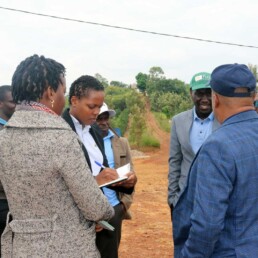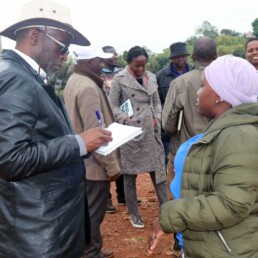
Overview
The governance of the Ruvuma River Basin is a collaborative effort involving various stakeholders committed to sustainable management and equitable utilization of the basin’s resources. Effective governance ensures the long-term well-being of the basin, its ecosystems, and the communities dependent on its waters. The governance structure is designed to promote transparency, stakeholder engagement, and informed decision-making.
RUVUMA RIVER BASIN AUTHORITY
The Ruvuma River Basin Authority serves as the primary governing body responsible for overseeing the management of the basin. It operates under the mandate of the Ministry of Water and Natural Resources, in collaboration with local authorities, non-governmental organizations, and community representatives. The authority’s responsibilities include formulating policies, coordinating activities, and ensuring compliance with relevant laws and regulations.
STAKEHOLDER ENGAGEMENT
The engagement of stakeholders is a fundamental aspect of the governance process in the Ruvuma River Basin. We value the participation and contributions of all stakeholders, including local communities, water users, civil society organizations, and government agencies. Through public consultations, workshops, and stakeholder meetings, we foster dialogue, exchange of ideas, and collaboration in decision-making processes.
INSTITUTIONAL ARRANGEMENTS
The governance structure of the Ruvuma River Basin involves a network of institutions working together to achieve common goals. These institutions include government agencies, local authorities, non-governmental organizations, and community-based organizations. Each entity plays a distinct role in the governance process, contributing expertise, resources, and local knowledge to support informed decision-making and effective implementation.
Transboundary Cooperation
Collaborative mechanisms, such as joint management agreements, bilateral or multilateral treaties, and dialogue platforms, facilitate coordination and address shared challenges

DECISION-MAKING PROCESSES
Decisions related to the Ruvuma River Basin are made through inclusive and participatory processes. Stakeholders’ inputs, scientific data, and technical assessments are considered when making important decisions regarding water allocation, infrastructure development, and environmental impact mitigation. The governance structure ensures that decisions are transparent, accountable, and guided by the best available evidence and stakeholder perspectives.
MONITORING AND EVALUATION
Monitoring and evaluation mechanisms are in place to assess the effectiveness of governance arrangements and the management of the Ruvuma River Basin. Through data collection, analysis, and periodic assessments, we track the health of the basin’s ecosystems, water quality, and social impacts. The findings inform adaptive management approaches, enabling us to make informed decisions and address emerging challenges.
COLLABORATION AND PARTNERSHIPS
Collaboration and partnerships are vital for addressing the complex and transboundary nature of the Ruvuma River Basin. We actively engage with other river basin organizations, neighboring countries, and international entities to share experiences, knowledge, and best practices. By pooling resources, expertise, and data, we strive to achieve sustainable development, environmental protection, and equitable water allocation in the basin.
REPORTING AND COMMUNICATION
Transparency and effective communication are central to our governance approach. We are committed to sharing information and updates on the governance of the Ruvuma River Basin with stakeholders and the public. Regular reports, publications, and online platforms provide access to relevant information, enabling stakeholders to stay informed, provide feedback, and actively participate in the decision-making processes.
